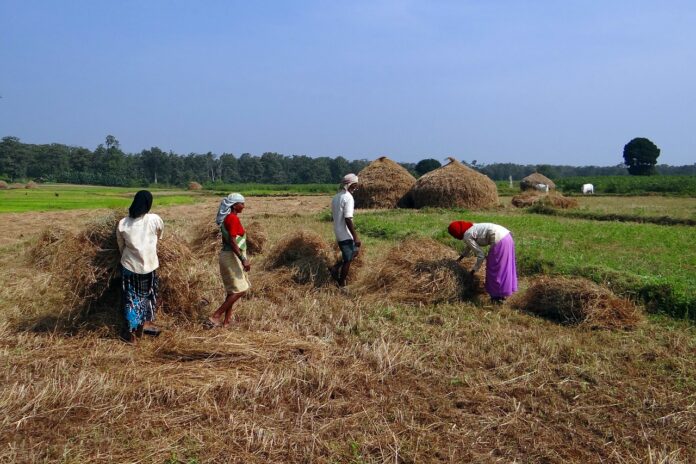One of the last giants of the 1960s and 70s Green Revolution, M.S. Swaminathan, died at his home in Chennai, India, on Sept. 28. He was 98.
Swaminathan was to India what Norman Borlaug, the Iowa farm boy turned Nobel Peace Prize winner, was to the rest of the hungry, post-war world: a brilliant, hands-on scientist whose work saved untold millions — maybe billions — from lives of poverty and starvation.
“‘If Borlaug was the way,’” I wrote in this space after a 2004 visit to Chennai, “Swaminathan was the means” because he had “turned India’s centuries-empty begging bowl into an overflowing breadbasket …”
It didn’t happen overnight. Swaminathan invited Borlaug to India in 1963 to tour farms. Shortly thereafter, the two collaborated to develop wheat and rice varieties to replace less hardy, more vulnerable varieties used by Indian subsistence farmers at the time.
By 1974, noted the New York Times in Swaminathan’s obituary, “India was self-sufficient in wheat and rice. By 1982, wheat production had reached almost 40 million metric tons, more than triple the harvest in the early 1960s.” (By comparison, U.S. wheat production this year will total around 47 mmt.)
Another important U.S. link was Swaminathan being named the first World Food Prize Laureate in 1987, an award envisioned by Borlaug. The already-famous Indian used the then-$200,000 prize money to establish the M.S. Swaminathan Research Foundation in Chennai to “assist women and rural development.”
But its impact was intended to go even deeper, the welcoming Swaminathan explained in our visit almost two decades ago. The foundation hopes “to harness science and technology ‘for an environmentally sustainable and socially equitable’ job-led economic growth of India’s rural areas.”
People first, technology second, he said, adding “First the Green Revolution, then an Ever-Green Revolution.”
Always the searcher, Swaminathan asked almost as many questions as were asked of him. Many centered on the relatively-new genetically modified corn and soybean seeds sweeping American farms at the time.
Surprisingly, the renowned geneticist wasn’t a big supporter. Like many others — especially the Europeans — Swaminathan worried about food safety, intellectual property rights, and if “‘the technology [will] increase the rich-poor divide.” His point was short and sharp: “‘Technologies that compound social problems are not needed.’”
That didn’t mean all GM technology was bad, he added; it did, however, mean there was a division to maintain. “GM seeds that did not ‘make an investment in the livelihoods of the poor,’ he said, are ‘unwelcome.’”
For example, his foundation’s researchers had “isolated the gene that allows mangrove trees to thrive in salt marshes. That gene was then introduced to rice because he believes salt-tolerant crops will play an increasingly important role as global warming impacts developing nations’ future food supplies.”
He, like Borlaug, wasn’t aiming for sainthood. Indeed, his detractors say his list of sins was far too long to earn him a halo. The biggest, say environmental groups both here and in India, was his “encouraging industrial farm practices that relied on expensive and polluting fertilizers and pesticides, and for supporting the development of genetically modified crops,” explained The Times obituary.
Guilty as charged, I suspect the easy-to-smile scientist might plead for two clearly redemptive reasons.
First, Swaminathan “came of age amid one of the worst disasters to strike India in the 20th century,” noted the Washington Post Sept. 28, “the Bengal famine of 1943, estimated to have killed … 3 million people.”
The youth, who had planned to follow his father into medicine, “set aside those plans to study agriculture after witnessing the agony of the famine.”
So forget the hardened critics, that is proper sainthood material.
And second, Swaminathan — like Borlaug and every farmer whose ag roots reach back even one generation — are swimming in the same vat of 1960s techno-guilt because no one, not even the venerable Borlaug, could know just how much environmental and cultural change accompanied the genius of those magical, life-saving crops.
We do know now, however, and the moral challenge we face is to stop blaming Borlaug and Swaminathan for yesterday’s sins and start accepting responsibility for ours today.














